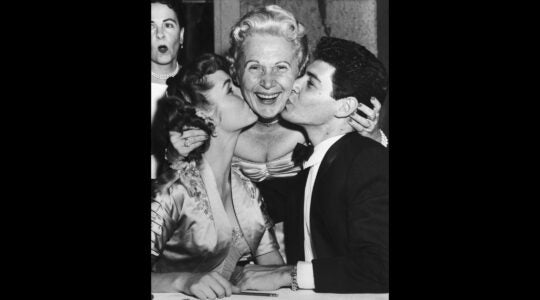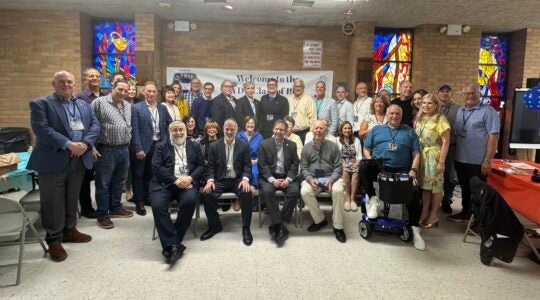Candlelighting, Readings:
Candles: 7:33 p.m.
Torah: Leviticus 21:1-24:23
Haftorah: Ezekiel 44:15-31
Havdalah: 8:37 p.m.
‘SSay to the kohanim, the sons of Aaron… do not make yourselves impure for the dead of your people” [Vayikra, 21:1].
Why does God insist that the priests not participate in burying the dead, except for closest family? And why is the High Priest forbidden to bury even those nearest to him? One of the mainstays of Jewish life is “gmilut hasadim” (acts of kindness), and among the most revered of these is burying the dead. How is it that the “sons of Aaron,” the offspring of one who epitomized kindness, should be debarred from what is considered the most disinterested form of charity for a fellow human?
Why does this quintessential act of caring defile priestly holiness?
Rabbi Mordechai Yosef of Isbitza, known as the Ishbitzer, author of the marvelous chasidic commentary, the “Mei Hashiloach,” extends the halachic implications of ritual impurity to the sphere of existentialist metaphysics, seeing a link between the embattled sanctity of the kohen and the challenge involving any person of faith in a secular reality. What is a kohen really, he asks, but someone who ultimately says “ken” — yes — to all the challenges and inconsistencies of our existence and tries to find an underlying meaning in them?
In the secular world, someone who sees Divine involvement in life is frequently regarded as being in a more enviable position than one without such consolation. But the Ishbitzer, basing himself on the above verses, says the opposite: While one who believes in chance takes the bad with the good as purely arbitrary and therefore can learn some equanimity, a believer faced with life’s contradictions can easily become embittered and consumed with anger! And that is the problem of our priest or, the contemporary equivalent, any believer who thinks at all.
In reply to “Do not make yourselves impure from the dead of your people,” the Ishbitzer says, “Do not nurse angry complaints against God’s attribute of strict judgment, which generates experiences of loss and absence in the world” [quoting the Zohar, Vayikra 88b]. And what is the opposite of all that is holy and meaningful in our lives but death itself? That a person created in God’s image should have his/her breath of life knocked out and become a decomposing lump is a negation of the very source of life, an act of blasphemy against God himself.
Because the kohen represents positive aspects of life, and his mission is one of pure chesed (loving kindness), forging a living connection between God and creation, he must have as little contact as possible with what negates it. The word used for the dead in Emor is not the usual “met,” but “nefesh,” often translated as “soul,” but actually meaning “animating life force.”
According to early Jewish mystical concepts there are at least three grades of soul: nefesh, ruach and neshamah. Like a rope ladder, one is rooted in the other, aspiring higher and higher. What, then, has the Hebrew word for “soul” have to do with death? The nefesh is the lowest of the three grades of soul, analogous to three types of breath and, similar to the seven chakras of Indian tradition, lodging in belly, lungs and throat.
There is nothing exclusively human, or indeed “spiritual,” about the nefesh, which signifies the individual personality of all creatures — human, animal, vegetable, even mineral. It is the attachment of the human nefesh to the soul that links it with the higher world, ruach, and the soul rooted in the Divine, neshamah, that fills it with life and makes it a vessel for holiness.
This is why the word nefesh can take on so many seemingly opposite meanings. In contact with its higher self, it is indeed a soul. On its own, it is an empty gravesite, so much debris and pollution. Now we will begin to understand why the kohen, above all, should not focus on the macabre aspects of existence that are cut off from the joyous flow of life.
“Therefore God commanded, ‘Say to the kohanim,’ [in a whisper, says the Ishbitzer] not to nurse a grudge against Divine judgment, for in the depths, His intention is only to make the world even better.” God does not pass on this revelation of ultimate intentions to His servants with any fanfare, but “in a whisper,” because while there are people suffering it might otherwise sound callous.
When I was a child I used to hear my father sing a chasidic song that I immediately connected, even at that young age, with the loss of almost his entire family in the Shoah. “Be strong, be strong, My children, My dear children, for as much as you can stop dwelling on your sufferings and busy yourselves with My joy … (you are even more endeared to Me). Be strong, My children, My precious ones….”
He sang it sotto voce. It was a sad song.
Freema Gottlieb is the author of “Lamp of God: A Jewish Book of Light,” and “Jewish Folk Art.”
The New York Jewish Week brings you the stories behind the headlines, keeping you connected to Jewish life in New York. Help sustain the reporting you trust by donating today.




